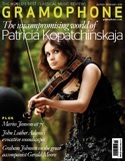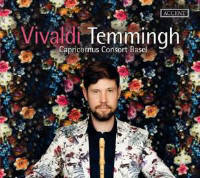Texte paru dans: / Appeared in: |
|
 |
Outil de traduction (Très approximatif) |
|
Reviewer:
Charlotte Gardner
The clever programming helps, because the Vivaldi concertos are each framed by Bach preludes; a device that not only functions as a palette-cleanser but also reminds us of Bach’s admiration of Vivaldi, and indeed of both men’s willingness to mix sacred and secular musical ideas. Even without such punctuations the Vivaldis would have offered up successive new worlds thanks to the sheer originality of Temmingh’s approach. The cornerstones are the extra-musical narratives he’s thought up for each concerto, effectively treating each as a three-act mini-opera in the spirit of The Four Seasons. For instance, he’s read the C minor melancholy of RV441 as sacred thoughts from Vivaldi the priest-turned-composer, its final movement’s strange seven-bar theme even perhaps a reference to the seven sacraments or Seven Deadly Sins. His pastoral imaginings on RV442 follow, its bucolic feel emphasised by a continuo combination of triple harp, lute and the zither-like psaltery. In fact, the presence of a few more unusual timbres across the six concertos’ continuo sections is one of the recording’s most striking features, because rather than simply choosing from the standard options, Temmingh has considered both what would have been available to Vivaldi and what might fit with the ‘doctrine of affections’. Thus, given that we know there was a psaltery at the Ospedale della Pietà, why not use one? Likewise, the church piety of RV441 demands organ and harp, while the imagined village band of RV312 is ripe for triple harp, theorbo and guitar. The playing is top-drawer too. Temmingh’s virtuosity is breathtakingly fluid and effortless, and he clearly enters a new world for each of his ‘mini-operas’. The Capricornus Consort, meanwhile, are light-footed in their dance, Vivaldi’s pulsing rhythms never over-articulated even in the temptation of the village-band guitar strums of RV312’s final Allegro. Equally striking is the ornamentation. Temmingh’s scholarly cues have included the part-book of one of Vivaldi’s orphanage pupils (perhaps copied with Vivaldi at her shoulder?), whose sumptuous ornamentations often occupy a wider range than even the original melodies. This is exactly what’s delivered for RV443’s ornamentally asking-for-it Largo, Domen Marincic’s recently penned, fantastically florid embellishments soaring from Temmingh’s lips for all their worth. This
really is a Vivaldi recorder concerto collection in a class of its own. (Oh, and
I also love his florals …) |
|




